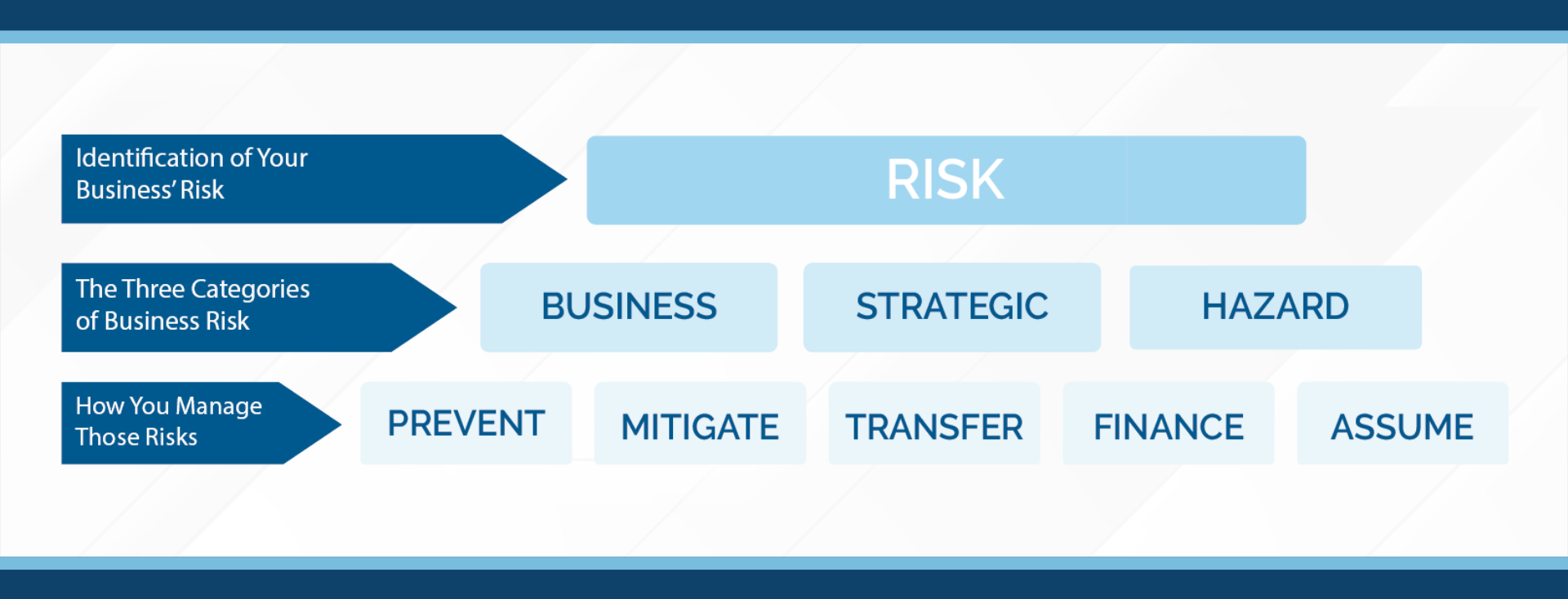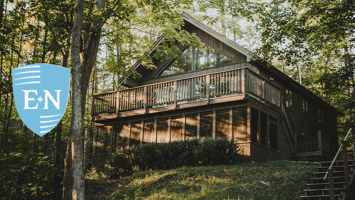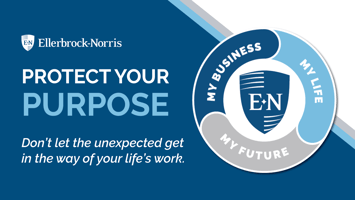Just a few years ago, taking a trip involved contacting travel agencies, booking hotel rooms and...
Construction Risk Management: A Holistic Guide to Protecting Projects and People

Construction risk management isn’t just paperwork – it’s the lifeline that protects your crews, your contracts, and your company’s future.
On any given project, unexpected risks can show up fast: a worker injury, a delayed shipment, a sudden storm or a dispute over scope. These moments don’t just cause frustration – they threaten timelines, margins and reputations. Left unchecked, they can ripple through your entire company, forcing you to scramble for solutions after it’s already too late.
That’s where a holistic, strategic construction risk management program comes in. With the right approach, you can anticipate the challenges before they happen, minimize the fallout and keep your business moving forward with confidence.
As we like to say, it takes all the “what if” scenarios and gives you the framework to say “here’s the plan” if any of them present themselves.
What Is Construction Risk Management and Why It Matters
At its core, construction risk management is the process of identifying, assessing and controlling the risks that can derail projects or harm your business. It's often misunderstood – trades businesses can think their safety program or insurance policies are enough. But limiting your approach to those two areas leaves major gaps.
True construction risk management is holistic. It looks at risks across three dimensions:
- Hazard risk: accidents, injuries, property damage, etc.
- Business risk: operational breakdowns, supply chain delays, turnover, etc.
- Strategic risk: leadership succession, financial planning, long-term business goals, etc.
Why does it matter? Because the stakes are high. OSHA violations, lawsuits or a key foreman walking away can all shut down a project.
At the same time, studies show that companies using holistic, strategic risk management see 25% higher firm valuations. Construction risk management isn’t just about avoiding losses – it’s about maximizing long-term business value.
The Main Construction Risks
Every construction company faces a unique set of challenges, but most risks fall into familiar categories.
- Safety risks: Falls, struck-by accidents, equipment failures. Construction consistently ranks among the top industries for workplace injuries. Without strong safety programs, you’re risking both your people and your profits.
- Financial risks: Thin margins mean cash flow problems, unexpected material cost spikes or poor bid estimates can quickly put you in the red.
- Legal and contract risks: Vague contracts, unfair liability transfer or disputes with subcontractors can land you in court.
- Project risks: Delays from poor scheduling, weather or resource shortages can cost you clients and future work.
- Environmental risks: Storms, floods or new environmental regulations can disrupt even the best-run projects.
- Outdated planning risk: The coverages you purchased years ago may not adequately cover losses today, the value of your business changes, as well.
The danger isn’t just each risk on its own. In construction, one problem often triggers another.
Let’s say your safety director leaves and you decide to ride it out for a year before replacing him or her. Instead of the daily toolbox talks, you do a quarterly safety training. All of the sudden, safety culture starts to slip. That increases employee turnover, employee injuries and OSHA violations. All of which bring further damage, from lawsuits to fines to operational slowdowns.
If you are not committed to a holistic risk management plan, you’re likely to let a few things slip. And those few things can lead to major issues.
How to Implement the Construction Risk Management Process
Putting construction risk management into practice doesn’t have to be complicated. The key is having a process that keeps risks visible, manageable and tied back to your long-term goals – not just today, but as your business grows.
At Ellerbrock-Norris, our process starts with a straightforward conversation about the risks you see on your jobsites and in your business. From there, we benchmark your exposure across the areas you prioritize, often safety, contracts, compliance or continuity. Finally, we bring it together in a plan that’s built to evolve with you.
Every risk we identify gets a clear strategy. Depending on the situation, you’ll decide whether to:
- Prevent it by averting the risk altogether.
- Mitigate it by reducing its impact.
- Transfer it through strong contract language.
- Finance it with the right insurance coverage.
- Assume it – while still planning ahead if it can’t be avoided.

The power of this approach is that it gives you visibility. You know where the biggest risks are, what’s being done about them and how they connect to your long-term goals. And once you have that clarity, it becomes easier to see where to focus first.
In construction, we tend to see the same areas rise to the top: keeping your crews safe, protecting yourself through contracts, staying compliant with ever-changing regulations and retaining the people your projects rely on most.
Let’s take a closer look at each of these, and how they fit into a holistic construction risk management plan.
Safety: A Cornerstone of Construction Risk Management
When people think of construction risk management, safety is often the first thing that comes to mind – and for good reason. Construction sites are inherently dangerous. But safety isn’t about compliance checklists – it’s about culture.
Building a safety culture means:
- Leadership sets the tone with safety-first decisions.
- Toolbox talks and jobsite inspections become routine.
- Crews feel empowered to “see something, say something.”
- Training goes beyond the basics to ensure that everyone is always prepared.
The payoff is real. OSHA estimates every $1 invested in safety yields $4–$6 in savings by preventing accidents, injuries and claims.
Better yet, strong safety programs improve morale, lower turnover and reduce workers’ compensation premiums.
Not sure where to start? Check out our guide on how to build your construction safety program from scratch.
Contracts and Legal: Shifting Risk Before It Hits
Contracts are one of the most powerful tools in construction risk management – but they’re often overlooked until a problem arises.
Good contracts:
- Transfer liability fairly between contractors, subcontractors and clients.
- Spell out responsibilities and expectations clearly.
- Protect your revenue by setting boundaries on what you can be held accountable for.
Take the example of a subcontractor who builds a deck that later fails. Without contract language assigning responsibility, you could be on the hook for repairs – or even lawsuits.
Reviewing contracts with legal and risk advisors before signing ensures you’re not unknowingly accepting liabilities that should belong to someone else.
Compliance: Avoiding Regulatory Pitfalls
Construction businesses live under a microscope of regulations – OSHA requirements, ADA compliance for benefits, EPA rules for environmental impact. Skipping compliance isn’t just about fines; it’s about lawsuits, halted projects and even personal liability.
A strong compliance program within construction risk management includes:
- Regular internal audits
- Staying updated on new regulations
- Training employees on compliance responsibilities
- Using advisors to simplify complex rules
Compliance might not feel urgent until it’s too late – but proactive planning saves you from devastating surprises.
Key Personnel and Employee Retention: Managing People Risk
People are at the heart of every project. Losing a superintendent or foreman mid-project isn’t just inconvenient – it can derail schedules, hurt client trust and cost you future bids. Not to mention nearly every conversation we have with new clients includes the lack of quality skilled workers in the market right now.
That’s why focusing on your people belongs in a construction risk management plan. It includes:
- Key personnel planning: Identifying critical roles, creating succession strategies and ensuring knowledge isn’t trapped in one person’s head.
- Employee benefits and retention: Competitive benefits and wellness programs reduce turnover, attract skilled workers and lower recruiting costs.
- Financial wellness and incentives: Keeping your best people motivated for the long haul through compensation modeling and retirement planning.
As you probably already know, the construction industry is already facing a labor shortage. That means that protecting and investing in your team isn’t just good leadership – it’s smart risk management.
Holistic Construction Risk Management with Ellerbrock-Norris
The truth is that construction risk management is never about one thing. Safety, contracts, compliance and people all overlap. Together, they form a web that either leaves you vulnerable – or makes you resilient.
At Ellerbrock-Norris, we’ve spent over a century helping construction companies protect their purpose. We sit on your side of the table, benchmark your risk and build a plan to maximize your business value while minimizing risk.
Your projects, your people, your future – they all deserve protection. Don’t wait until risk becomes reality. Build resiliency now.
Ready to get started? Let’s talk about your construction risk management strategy today.





.png?height=200&name=Blog%20Image%20(7).png)